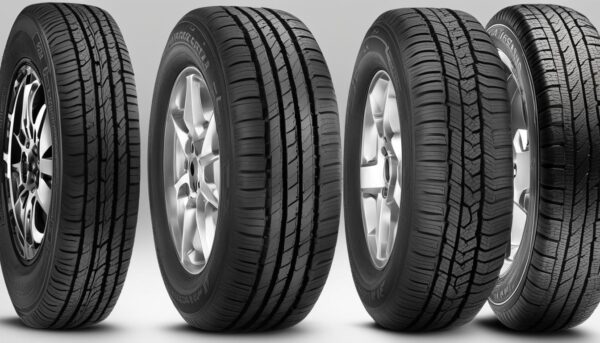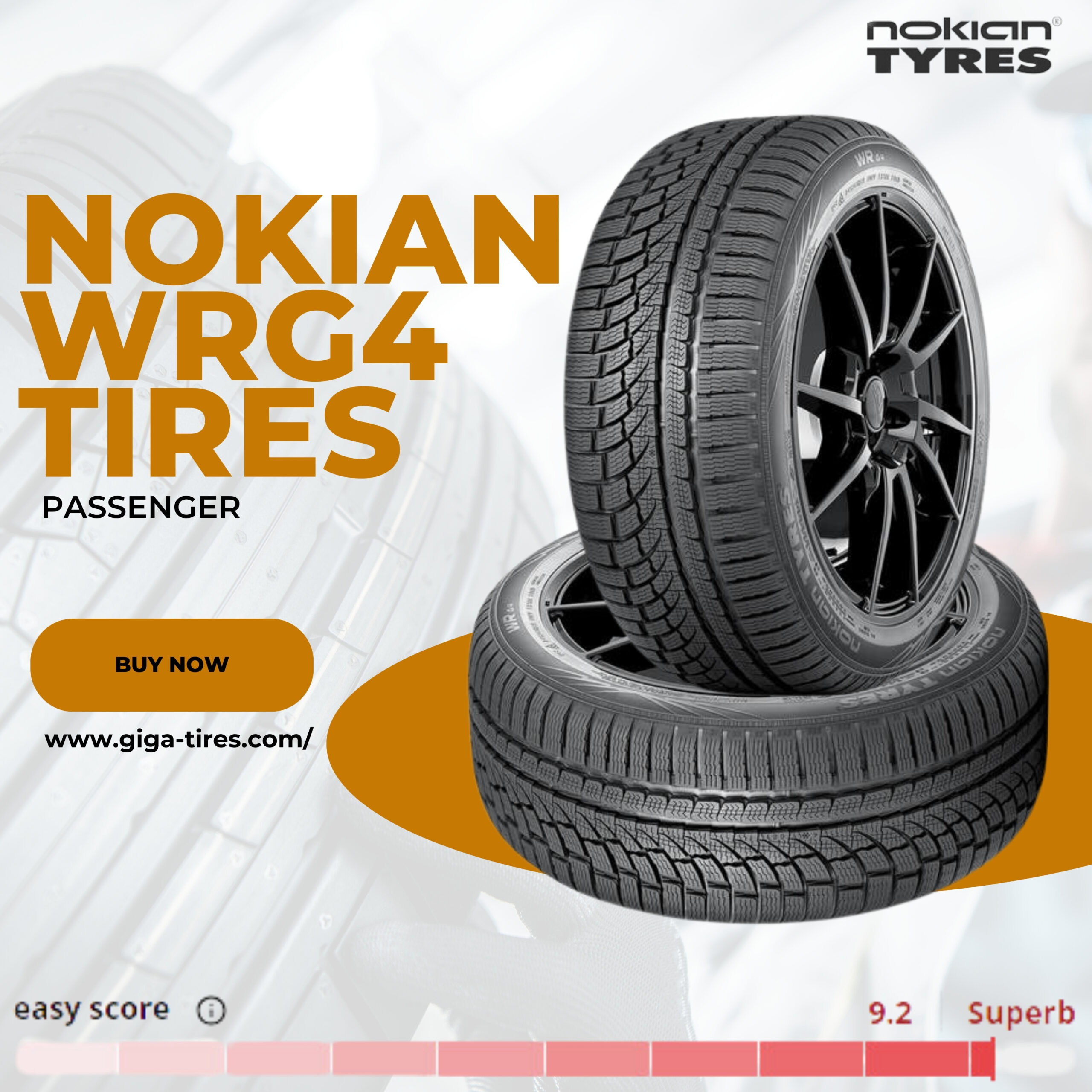Last Updated on 4 weeks
Unpacking the Recent Rise in Tire Price Increases
As we enter the new season, drivers face the prospect of rising tire costs, with nearly all major tire manufacturers announcing tire price increases. These hikes are set to fall in the 5 to 10 percent range, adding more than a hundred dollars to the cost of premium tires for standard vehicles like cars, SUVs, or light trucks. This trend is expected to affect online and brick-and-mortar retail options, so consumers must buy tires now and avoid the impending price jump.
Key Takeaways
- Major tire manufacturers are announcing tire price increases, ranging between 5 to 10 percent.
- Rising tire costs are expected to affect both online and brick-and-mortar retail options.
- Drivers should consider purchasing tires now before the price hikes set in.
- The increased costs will impact standard vehicles like cars, SUVs, and light trucks.
- Remaining informed about industry trends and dynamics is essential for changing costs.
Understanding the Recent Surge in Tire Prices
The steady climb in tire prices has left many consumers puzzled. This surge in tire costs can be attributed to a confluence of contributing factors, including increased raw material prices, global supply chain disruptions, and mounting operational challenges. By understanding these underlying factors, consumers can better navigate the fluctuating market and make informed purchasing decisions amid rising tire prices.
Factors Contributing to Rising Tire Costs
Tire manufacturers depend on raw materials like steel wire, synthetic rubber, and natural rubber to produce high-quality tires. When the prices of these critical inputs increase, tire manufacturers often attempt to absorb a portion of the cost inflation. However, the widespread nature of recent hikes has led to additional expenses being passed onto retailers and consumers.
These cost increases have spurred manufacturers to adjust their pricing strategies, leading to a notable rise in tire prices at a consumer level.
- Sharp increases in raw material prices
- Global supply chain disruptions
- Operational challenges faced by tire manufacturers
Impact of Raw Material Price Hikes on Tires
The impact of raw material price hikes on tire costs has been particularly significant among the various factors. Natural rubber, a fundamental component in tire production, has experienced substantial inflation rates, contributing to escalating tire prices. As a result, manufacturers have been compelled to adjust their pricing strategies, affecting consumers and market dynamics.
| Raw Material | Inflation Rate | Contribution to Rising Tire Prices |
|---|---|---|
| Steel Wire | 10% | Moderate |
| Synthetic Rubber | 15% | High |
| Natural Rubber | 20% | Significant |
The recent surge in tire prices is attributable to various contributing factors, such as increased raw material prices, global supply chain disruptions, and rising operational difficulties tire manufacturers face. These complex forces have merged, driving tire costs and posing considerable challenges for consumers grappling with the new market landscape.
The Specifics: How Much Are Tire Prices Going Up?
As the tire price surge continues, different tire brands, products, and sizes are experiencing varying price increments. While the average minimum increase hovers around 5%, top-tier brands and specific tire styles may witness price jumps as high as 12%. This upward trend is anticipated to be implemented by all major manufacturers as they grapple with the escalating costs of raw materials and supply chain disruptions.
To better illustrate the range of anticipated price increases across brands and tire types, consider the following table:
| Brand | Basic Tire Type | Projected Price Increase |
|---|---|---|
| Goodyear | All-season passenger car tires | 5-7% |
| Michelin | Performance car and SUV tires | 6-10% |
| Bridgestone | Light truck all-terrain tires | 8-12% |
| Continental | Commercial truck tires | 5-9% |
Note: The percentages provided are approximations based on recent announcements by tire manufacturers and market trends. Actual price increases may vary depending on regional distribution and retailer markups.
Amidst the tire price specifics, consumers must make informed decisions when purchasing new tires. By acting proactively and keeping a close eye on the tire market, buyers can potentially save hundreds of dollars on their tire purchases as they navigate the ongoing price surge.
Navigating the Price Surge: Shopping Tips for Consumers
With soaring tire prices becoming a reality, consumers must adopt savvy shopping strategies to secure the best tire deals possible.
Finding Deals Amidst Soaring Tire Prices
- Research and compare: Thoroughly compare multiple brands, products, and retailers to identify the most affordable options.
- Monitor sales and promotions: Stay up-to-date with ongoing sales and promotions, both online and offline, that may offer considerable discounts.
- Seek rebates and incentives: Many manufacturers and retailers offer rebates, incentives, or bundled deals, enabling you to save on purchases.
- Scrutinize product warranties: Opt for tires backed by solid warranties, ensuring long-term value and potential savings in future maintenance.
Timing Your Purchase to Avoid Increased Tire Expenses
Be proactive and replace your tires during the late winter, when driving conditions are more hazardous, and quality tires are essential for safety. Hydroplaning and traction issues can be reduced by investing in high-performance, all-weather tires such as the Nokian WRG4. Buying tires before the price hike takes effect not only ensures safer drives in challenging conditions but also translates into significant cost savings.
“The best time to replace tires is before you need them, especially when you know that prices are going to soar. Adopt a proactive approach to get the best bang for your buck on crucial safety equipment for your vehicle.”
| Tire Brands | Current Price | Projected Price After Hike | Effective Savings |
|---|---|---|---|
| Michelin | $150 | $165 | $15 |
| Goodyear | $130 | $143 | $13 |
| Bridgestone | $140 | $154 | $14 |
| Nokian | $160 | $176 | $16 |
Following these shopping tips and considering the timing of your purchase can help you avoid the financial implications of tire price hikes, ensuring you get the best value and maintain your driving safety amidst the escalating tire costs.
Assessing the Impact of Tire Price Increases on Different Vehicle Types

The recent announcements of tire price increases are set to impact various vehicle types, including cars, trucks, SUVs, commercial trucks, off-road, and agricultural machinery. The effects of these inflated tire prices may lead to distinctive impacts and potential financial strains for different types of consumers and industries, depending on the specific needs and vehicle requirements.
As tire manufacturers adjust their pricing strategies, vehicle owners need to consider the unique needs of their vehicles to avoid any potential financial stress. This section will analyze the possible effects of increased tire prices on different vehicle types and the subsequent implications for various consumer segments.
The increased tire prices will impact a broad spectrum of vehicle types, affecting both personal and commercial consumers.
- Passenger Vehicles: Consumer vehicles such as sedans, coupes, and hatchbacks may experience a considerable financial impact due to the increased tire prices. These vehicles typically require replacement tires every 25,000 to 50,000 miles, and higher tire prices will lead to increased maintenance costs for owners.
- Light Trucks and SUVs: The rising tire costs may present more significant challenges for light trucks and SUV owners since these vehicles usually demand more robust and durable tires, which tend to come with higher price tags. As a result, owners of these vehicles may face longer-term financial pressures because of inflated tire prices.
- Commercial Vehicles: Skyrocketing tire prices severely threaten commercial truck operators as increased operational costs can affect business profitability. Since commercial vehicles require frequent tire replacements, the implications of tire price hikes in this sector are even more pronounced.
- Off-Road and Agricultural Machinery: Users of off-road and agricultural equipment may also experience the ripple effects of the increased tire costs. These vehicles typically require specialized tire solutions designed to withstand harsh environmental conditions, and the surging tire prices may lead to financial burdens when purchasing or maintaining these machines.
| Vehicle Type | Average Tire Replacement Interval | Impact of Inflated Tire Prices |
|---|---|---|
| Passenger Vehicles | 25,000 – 50,000 miles | Increased maintenance costs |
| Light Trucks and SUVs | 30,000 – 60,000 miles | Higher financial burden due to the need for more robust tires |
| Commercial Vehicles | 20,000 – 40,000 miles | Significant impact on operational costs and profitability |
| Off-road and Agricultural Machinery | Varies depending on usage and conditions | Increased financial strain for specialized tire solutions |
In conclusion, the impact of inflated tire prices on different vehicle types varies significantly, posing distinctive challenges for various consumer segments. As tire price increases become more prevalent, vehicle owners should carefully assess their unique needs to mitigate potential financial strains and consider proactive purchasing strategies to counter the rising tire expenses.
The Global Ripple Effect: Tire Cost Surge from an International Perspective
The rapid escalation in tire prices is not an isolated phenomenon. Instead, it has emerged due to a global ripple effect, with international tire manufacturers, particularly from China, joining the trend of announcing price hikes. The primary cause of these price increases is the alarming rise in raw material costs, which has placed additional strain on tire manufacturers’ production and supply chains worldwide.
This international trend signals a tire cost surge in the United States and reverberates across the global market, affecting consumers and manufacturers alike. The implications of this worldwide trend indicate a sustained impact on the tire industry, with predictions of further increases materializing during traditionally high-demand seasons.
Global supply chain constraints continue to contribute to rising operational costs for tire manufacturers, leading to a widespread tire cost surge in the international market.
The international perspective on the tire cost surge reveals that rising raw material prices are not the only factor at play. An increasingly interconnected global economy means that disruptions in one part of the world can reverberate across entire industries. For example, shipping delays, industrial accidents, and other incidents can all contribute to unexpected increases in operational costs, accelerating the ripple effect.
- Escalating raw material costs
- Supply chain disruptions and delays
- International economic factors
- Seasonal fluctuations in demand
Overall, the tire cost surgeon on a global scale depicts a situation where macro-level factors are combined to create an industry-wide crisis affecting manufacturers and consumers across the globe. As the international community navigates these challenges, all stakeholders must remain informed and prepared for the road ahead, especially in a world where interconnected factors further blur the lines between national and international industries.
Industry Responses to Escalating Tire Prices
As tire prices continue to climb, various industry responses have emerged, with tire manufacturers adjusting their strategies to confront the challenges posed by the rising costs. This section explores how tire manufacturers respond to these market pressures and what consumers can expect regarding pricing changes.
How Tire Manufacturers Are Adjusting Strategies
Reacting to the uptick in raw material costs, operational challenges, and supply chain disruptions, some tire manufacturers have announced consecutive price increases. These hikes are not limited to any specific brand or tire category, affecting a broad range of products. The United States market has witnessed multiple reputable tire brands announcing price hikes in response to the current inflation rate and market volatility.
Highlighted below are some of the critical ways tire manufacturers are adapting to the changing market:
- We are employing operational cost control measures to maintain profitability amid the increasing materials costs.
- We enhance supply chain resilience through various risk mitigation strategies to safeguard against potential disruptions.
- It is streamlining production processes to improve efficiency and reduce waste, thus lowering production costs.
“Despite multiple challenges, tire manufacturers are committed to delivering high-quality, safe products while still remaining competitive in the market.”
Consumers must stay informed about these industry responses and pricing changes as the market faces uncertainty and potential volatility.
| Tire Manufacturer | Price Increase (%) | Effective Date |
|---|---|---|
| Goodyear | 8 | January 1, 2022 |
| Michelin | 5 | February 1, 2022 |
| Bridgestone | 6 | March 1, 2022 |
| Continental | 7 | April 1, 2022 |
Preparing for the Road Ahead: Long-Term Projections of Tire Costs
Industry experts are managing expectations for tire costs shortly, warning that the trend towards higher prices will likely continue well into the following year. Challenges such as the microchip shortage, labor unrest, port issues, and delivery delays are complex and, even if resolved shortly, may take until at least 2023 to fully realign, signaling a prolonged period of increased tire expenses for consumers.
“It’s important for consumers to be prepared for the possibility of higher tire costs in the coming years due to ongoing global supply chain disruptions and other factors affecting the industry.”
To better understand the potential impact on consumers, let’s take a look at some of the key contributors to the long-term projections of tire costs:
- Microchip shortage
- Labor unrest
- Port issues and shipping delays
- Raw material price fluctuations
When preparing for the future, consumers should consider the following practical steps to mitigate the impact of rising tire costs:
- Explore different tire brands and products to identify cost-effective options
- Monitor sales and promotions to take advantage of any discounts
- Opt for all-weather or high-quality tires to maximize longevity and value
- Stay informed about market trends and developments to make informed decisions
Notwithstanding the challenges, consumers can save on tire costs by shopping smartly, staying informed, and making proactive decisions. Even with rising prices, investing in quality tires for your vehicle remains a crucial element of road safety and performance.
Tire Price Surge: A Deep Dive into Market Dynamics

The tire market has undergone significant changes recently, with price surges driven by a convergence of numerous factors. As highlighted in Section 2: Understanding the Recent Surge in Tire Prices, an abrupt rise in raw material prices, global supply chain crises, and increased operational costs have all contributed to tire price hikes. However, there’s more to the story as the market dynamics are further complicated by factors ranging from global shipping delays to trade disruptions, such as those caused by the infamous Suez Canal blockage. In this deep dive section, we will analyze the various drivers behind the recent tire price surge.
- Raw Material Price Hikes: Rubber, steel wire, carbon black, and other essential materials for tire production have experienced significant cost increases. This, in turn, forces tire manufacturers to adjust their pricing strategies.
- Global Supply Chain Disruptions: The ongoing pandemic and international trade disputes have significantly impacted global supply chains, with cargo shipments facing delays and port congestion.
- Increased Operational Costs: Labor shortages and energy price fluctuations have also contributed to rising operational costs for tire manufacturers.
- Trade Disruptions: Unexpected events such as the Suez Canal blockage in March 2021 caused additional global supply chain bottlenecks, augmenting manufacturers’ challenges.
These combined factors have increased uncertainty and volatility in the tire market, making it challenging for market participants to navigate. Considerations such as the worldwide dependence on certain raw materials, the potential for further supply chain disruptions, and the ongoing increase in operational costs all contribute to an uncertain outlook for the tire market.
“The tire market is more volatile than ever, with present and future price fluctuations shaped by a complex web of interconnected factors.”
Let’s look at the escalating raw material costs to illustrate further the impact of key factors influencing the tire price surge. Below is a table highlighting the average increase in prices of core raw materials for tire manufacturing from 2020 to 2021:
| Raw Material | Average Price Increase (%) |
|---|---|
| Natural Rubber | 60 |
| Synthetic Rubber | 30 |
| Steel Wire | 35 |
| Carbon Black | 15 |
As evident from the table, the escalating prices of raw materials have placed considerable upward pressure on tire prices. How the tire market will adapt and evolve in response to these dynamics remains to be seen, but understanding these factors is essential to navigating the current landscape.
Practical Advice for Drivers Facing Inflated Tire Prices
With tire prices on the rise, drivers should adopt strategic approaches to manage the impact of inflated costs while maintaining the safety and performance of their vehicles. The following practical advice can help drivers stay well-equipped on the road while avoiding additional expenses:
Stay informed about upcoming price hikes and consider purchasing tires now before higher prices take effect.
- Buy tires before price increases: Keep an eye on announcements from significant tire manufacturers and aim to purchase tires before the new prices are implemented to secure the best value.
- Explore various brands: Comparing multiple tire brands could lead to more affordable options without compromising quality.
- Invest in all-weather tires: Choosing all-weather tire options can enhance the utility and lifespan of your tires, potentially leading to long-term savings by reducing the need for additional purchases.
Furthermore, understanding tire maintenance can help drivers extend the life of their tires and reduce overall expenses. An easy-to-follow preventive maintenance plan consists of the following steps:
- Regularly inspecting tire tread depth and replacing tires when necessary
- Monitoring tire pressure to ensure optimal performance and fuel efficiency
- Performing routine tire rotations and alignments to maintain even tread wear and prolong tire life
Adhering to these steps not only benefits drivers by increasing the lifespan of their tires but also plays a crucial role in ensuring driving safety and optimizing vehicle performance.
| Key Tire Maintenance Task | Benefit |
|---|---|
| Tread Depth Inspection | It prevents issues such as poor traction and uneven wear |
| Tire Pressure Monitoring | Boosts fuel efficiency and performance |
| Rotation and Alignment | Ensures evenly distributed wear, prolonging tire life |
By following this practical advice, drivers can mitigate the impact of inflated tire prices and continue to enjoy a safe and smooth driving experience.
Tire Easy: A Resource for Cost-Effective Tire Purchasing
Tire Easy is a valuable resource for drivers looking to preempt the price increases, providing a vast selection of new tires at various price points. With convenient online ordering and fast shipping, Tire Easy offers a cost-effective solution for consumers aiming to minimize the impact of rising tire costs on their budgets.
Time is of the essence: Beat the rising tire costs with Tire Easy’s affordable and diverse range of brand new tires.
Let’s take a closer look at how Tire Easy can assist consumers in finding the perfect tire match without breaking the bank. Here are some of the advantages of choosing to purchase new tires online through Tire Easy:
- Competitive pricing on leading tire brands
- Wide selection of tire sizes and styles
- Easy-to-use website for a seamless shopping experience
- Fast shipping, ensuring a timely delivery
- Top-notch customer support to address queries and provide assistance
| Benefits | Details |
|---|---|
| Competitive Pricing | Tire Easy offers attractive pricing for its vast inventory, allowing consumers to shop cost-effectively. |
| Wide Selection | With a broad array of tire sizes, styles, and brands available, customers can easily find their ideal new tires. |
| Convenience | Tire Easy’s user-friendly website simplifies the tire shopping process, ensuring a seamless experience for all customers. |
| Fast Shipping | Quick shipping ensures satisfied customers receive their tires promptly, reducing the wait time for installation. |
| Customer Support | An attentive customer support team promptly addresses all customers’ questions and concerns. |
In summary, Tire Easy offers a comprehensive and cost-effective solution for purchasing new tires online amid the looming price increases. This user-friendly platform enables consumers to avoid rising tire costs and invest in quality tires without straining their budgets.
Conclusion
The recent tire price increases announced by major tire manufacturers are a significant trend affecting consumers nationwide. These hikes are attributed to various factors, such as rising raw material costs, supply chain disruptions, and operational challenges. As drivers, staying informed and understanding the reasons behind these increases is essential to minimize the financial impact on our budgets.
By employing intelligent shopping strategies, including timely purchases, exploring different brands, and considering all-weather tire options, drivers can effectively navigate these changes and save money. Resources like Tire Easy provide cost-effective solutions by offering a wide selection of new tires at competitive prices and the convenience of online ordering and speedy shipping.
As future tire market trends remain volatile, staying updated on industry adjustments and market dynamics will prove valuable for consumers. By keeping track of these developments and proactively adapting to them, drivers can make informed decisions that save money and ensure safety and longevity in their tire investments.
FAQ
What factors contribute to the recent surge in tire prices?
The recent surge in tire prices can be attributed to several factors, including a sharp increase in critical raw materials like steel wire, synthetic rubber, and natural rubber. Additionally, global supply chain constraints and operational challenges tire manufacturers face contribute to rising tire costs.
How much are tire prices expected to increase?
Tire prices are projected to increase by 5 to 10 percent, with premium tires for standard vehicles potentially seeing an additional cost of over a hundred dollars. The increase varies among tire brands, products, and sizes, with some witnessing price hikes as high as 12%.
How do these price increases affect different types of vehicles?
The announced tire price increases apply broadly across various vehicles, including cars, trucks, SUVs, commercial trucks, off-road vehicles, and agricultural machinery. The impact and potential financial strain may vary depending on the specific needs and vehicle requirements of different consumers and industries.
What are some shopping tips for consumers to navigate the tire price surge?
Consumers can navigate the tire price surge by purchasing tires before price hikes take effect, exploring a variety of brands to find the best value, and investigating all-weather options to maximize the utility and longevity of their tire purchase. This can potentially save money in the long term.
What is Tire Easy, and how can it help with cost-effective tire purchasing?
Tire Easy is an online retailer offering various new tires at multiple prices, allowing consumers to find cost-effective solutions for their tire needs. With convenient online ordering and fast shipping, Tire Easy provides a resource for consumers aiming to minimize the impact of rising tire costs on their budgets.
What are the long-term projections for tire costs?
Industry experts warn that the trend towards higher tire prices will likely continue well into the next year due to ongoing challenges such as microchip shortages, labor unrest, port issues, and delivery delays. The situation may take until at least 2023 to realign fully, indicating a prolonged period of increased tire expenses for consumers.












